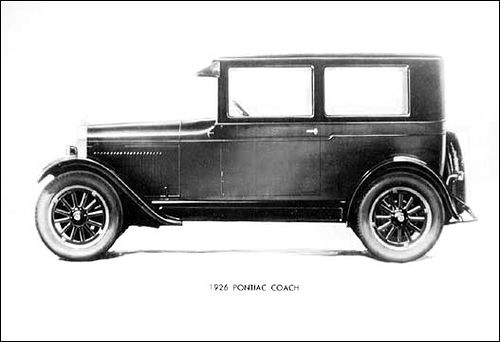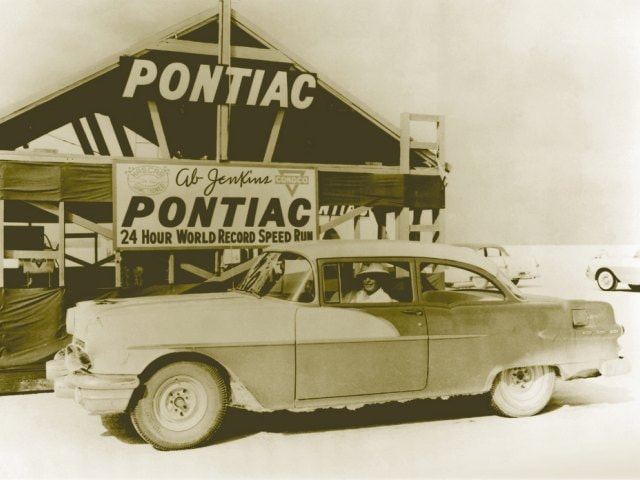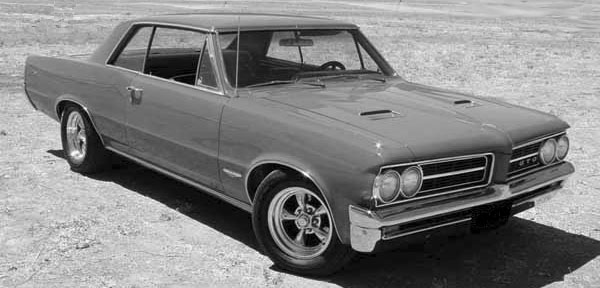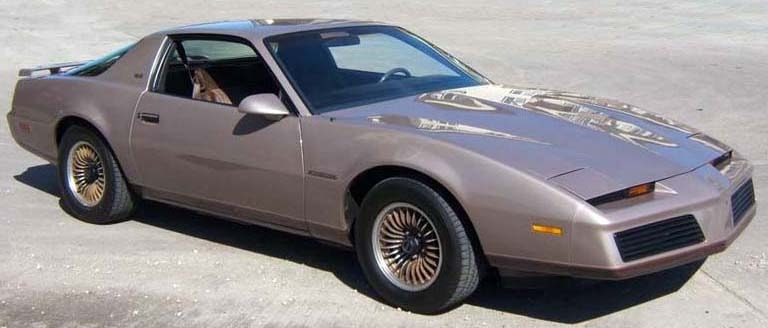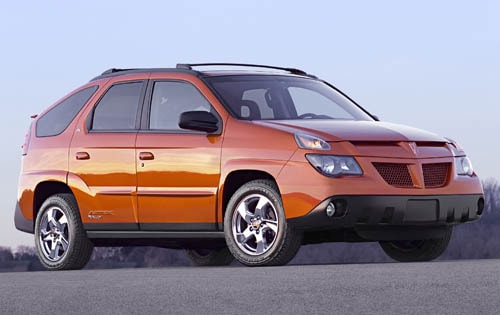We would have preferred not to have to write this piece. It is, in essence, an obituary. This might not tell many of you who or why Pontiac was. A niche brand, built only for those who knew what they want from a car. Pontiac, even if it set out to a volume produced car, it turned out to be something else altogether. From the outskirts of GM's line-up, it managed to set up a new icon for the American way of life: horsepower and an open road. Who won't remember, years from now, the names GTO or Firebird?
GM's decision to phase out Pontiac is sure to make both Edward M. Murphy and William Durant turn in their graves. But it's a done deal, as was the case with Oldsmobile and what remains now are the memories, the history and a few highlights worth mentioning.
Before We Had the Muscles
Pontiac started out in 1893 under the Pontiac Buggy Company name. Based in Pontiac, Michigan, the company produced horse-drawn carriages. Yet, as the automotive industry took off, largely due to Ford's Model T, Pontiac's founder, Edward M. Murphy set the basis for the Oakland Motor Car Company in 1907. Bought by William Durant, GM founder, shortly after Murphy's death in 1909, Pontiac made its first steps into becoming the father of a new type of car.
The first Pontiac car to come out the assembly lines in 1926 was the Series 6-27. The $825 car sold so well (76,742 units in the first year) that it forced GM to start building a $15 million assembly plant in the brand's home town. What was the largest construction project in the US that year became an attraction in itself, thanks to its unique architecture and the large scale use of glass. The following model, called the Series 6-28, which had, for the first time in a Pontiac a cross-flow radiator, sold no less than 184,000 in its first year.
From here on, decline, in the purest GM style, started. Pontiac built the Series 6-29 Big Six (initially a Vauxhall), the Series 6-30B (which was unfortunate enough to come in 1930, at the peak of the Great Depression) and the Series 401.
Pontiac's battle for survival started in 1932. Following the demise of the Oakland name, GM started contemplating discontinuing the line. Averaging a loss of $125.35 per unit sold, Pontiac was only saved by the integration of its components with GM's favorite child, the Chevrolet. In addition, just prior to the war, Pontiac managed to come up with something entirely new for the customers: the choice of engine.
In 1938, Pontiac lead the way for the introduction of column-mounted gearshift and, what shortly became Pontiac's trademark, the chromed ribbons which swept down the hood were introduced in 1936 and gave birth to the so called "silver streaks".
During the war, Pontiac joined both the Navy and the US army. Its facilities now built Oerlikon 20 mm anti-aircraft canons (successfully used by the US Navy to repel Japanese kamikaze aircraft in the Pacific War), front axles for the M-5 high-speed tank and even aircraft-launched torpedoes.
Developing an Attitude
Following the war, it was clear that just building cars as before was just not enough. In the blooming post-war era, customers were harder to please, as they now looked for better, more powerful cars. Motorsports took off again, signaling the new path for automotive players. Pontiac saw the potential of motorsports for both the development of its cars and the image of the brand rather late.
Pontiac's first official race participation was at the Bonneville Salt Flats in Utah in 1956. A stock 1956 two-door sedan Pontiac with a modified 285 hp high compression ratio engine and four-barrel carburetor, driven by 73 year-old Ab Jenkins managed to post a new 24-hour speed record, averaging 118.337 mph (189 km/hour) over a 2,841 miles distance.
It was only in 1957 when Semon "Bunkie" Knudsen (the one who introduced Pontiac to motorsports) was given the task to turn Pontiac around and make turn it into a trademark in the American automotive culture. He was given five years to do so, or face the scrap yard. His first step? Kill the "silver streaks", together with the Indian-head hood ornament. That same year, John DeLorean joined Pontiac and the legend was ready to begin.
Showing Off
1964 is the year which will remain in Pontiac's history as the date in which the very first muscle car came to be: the Pontiac GTO (Gran Turismo Omologato), or, as some thought of "a dragster with sports-car handling". Sure, it was only offered as an option at first, but it was too late for the 330+ cid engine ban: the muscle car was here to stay.
Despite GM's banning of factory racing in 1963, the American consumer now quickly developed a soft spot for the GTO. 31,000 cars were sold in the first year, but only because this is how much plant capacity allowed to be produced. By 1966, over 95,000 GTO's were on the streets.
What followed was a display of power from Pontiac. The arrival of the Firebird in 1967, followed by the 1969 Grand Prix established Pontiac as a performance car builder. Low-volume vehicles like the Firebird Trans Am and the GTO Judge were just the cherry on top of the cake, as they brought even more prestige to the name. All the details of the GTO can be found here.
Where Did Our Fame Go
Unfortunately, the Pontiac success story was not meant to last. Pontiac's glamor (the GTO remains famous to date) started fading away by 1971. To blame is, obviously GM. The low compression ratio policy started killing off high performance engines. In 1972, the Firebird was nearly cancelled. An up-down-up-down motion started rocking Pontiac's sales. Two fuel crisis (1974 and 1979), the cancellation of the GTO (1974), a strike which rendered hundreds of Camaros and Firebirds obsolete (model year 1972) all made for a very troubled decade for Pontiac.
It all led to the second make-over of the brand in early 1980s, this time by the hands of advertising. Pontiac got a slogan, "We Build Excitement", but had no product to put behind the words. After revising it, the catch phrase turned into "The Excitement Begins" and later, upon the release of the third generation Firebird in 1982, became "The Excitement Really Begins". It turned out to be a good move, boosting Pontiac's sales - 16 percent up for the Firebird. For the first time in Pontiac history, an optional full-time, all-wheel drive system was fitted on the Pontiac 6000 STE, which will shortly become the most advanced nameplate in the Pontiac stable.
Go with the Flow
Starting with the 1990s, Pontiac ceased to be identified with a muscle car manufacturer. As globalization took shape, the manufacturer expanded its business and released its first minivan, the Trans Sport in 1990. As the trend began to take hold, the company turned to facelifts (Bonneville, Trans Sport) and special editions (1992 Grand Prix). It was not until 2001 that the brand brought something new to the table. That year, Pontiac debuted the world's first Sport Recreation Vehicle, the Aztek.
By the time the Aztek came to be, Pontiac had lost all of its past glamor. Hooked in the modern day auto market, it slowely began struggling to meet ever more greener, so-unlike-Pontiac demands. The final blow was given by the current economic crisis. GM wants and probably will kill the brand, despite some of its dealers' attempts to buy it.
GM's decision to phase out Pontiac is sure to make both Edward M. Murphy and William Durant turn in their graves. But it's a done deal, as was the case with Oldsmobile and what remains now are the memories, the history and a few highlights worth mentioning.
Before We Had the Muscles
Pontiac started out in 1893 under the Pontiac Buggy Company name. Based in Pontiac, Michigan, the company produced horse-drawn carriages. Yet, as the automotive industry took off, largely due to Ford's Model T, Pontiac's founder, Edward M. Murphy set the basis for the Oakland Motor Car Company in 1907. Bought by William Durant, GM founder, shortly after Murphy's death in 1909, Pontiac made its first steps into becoming the father of a new type of car.
The first Pontiac car to come out the assembly lines in 1926 was the Series 6-27. The $825 car sold so well (76,742 units in the first year) that it forced GM to start building a $15 million assembly plant in the brand's home town. What was the largest construction project in the US that year became an attraction in itself, thanks to its unique architecture and the large scale use of glass. The following model, called the Series 6-28, which had, for the first time in a Pontiac a cross-flow radiator, sold no less than 184,000 in its first year.
From here on, decline, in the purest GM style, started. Pontiac built the Series 6-29 Big Six (initially a Vauxhall), the Series 6-30B (which was unfortunate enough to come in 1930, at the peak of the Great Depression) and the Series 401.
Pontiac's battle for survival started in 1932. Following the demise of the Oakland name, GM started contemplating discontinuing the line. Averaging a loss of $125.35 per unit sold, Pontiac was only saved by the integration of its components with GM's favorite child, the Chevrolet. In addition, just prior to the war, Pontiac managed to come up with something entirely new for the customers: the choice of engine.
In 1938, Pontiac lead the way for the introduction of column-mounted gearshift and, what shortly became Pontiac's trademark, the chromed ribbons which swept down the hood were introduced in 1936 and gave birth to the so called "silver streaks".
During the war, Pontiac joined both the Navy and the US army. Its facilities now built Oerlikon 20 mm anti-aircraft canons (successfully used by the US Navy to repel Japanese kamikaze aircraft in the Pacific War), front axles for the M-5 high-speed tank and even aircraft-launched torpedoes.
Developing an Attitude
Following the war, it was clear that just building cars as before was just not enough. In the blooming post-war era, customers were harder to please, as they now looked for better, more powerful cars. Motorsports took off again, signaling the new path for automotive players. Pontiac saw the potential of motorsports for both the development of its cars and the image of the brand rather late.
Pontiac's first official race participation was at the Bonneville Salt Flats in Utah in 1956. A stock 1956 two-door sedan Pontiac with a modified 285 hp high compression ratio engine and four-barrel carburetor, driven by 73 year-old Ab Jenkins managed to post a new 24-hour speed record, averaging 118.337 mph (189 km/hour) over a 2,841 miles distance.
It was only in 1957 when Semon "Bunkie" Knudsen (the one who introduced Pontiac to motorsports) was given the task to turn Pontiac around and make turn it into a trademark in the American automotive culture. He was given five years to do so, or face the scrap yard. His first step? Kill the "silver streaks", together with the Indian-head hood ornament. That same year, John DeLorean joined Pontiac and the legend was ready to begin.
Showing Off
1964 is the year which will remain in Pontiac's history as the date in which the very first muscle car came to be: the Pontiac GTO (Gran Turismo Omologato), or, as some thought of "a dragster with sports-car handling". Sure, it was only offered as an option at first, but it was too late for the 330+ cid engine ban: the muscle car was here to stay.
Despite GM's banning of factory racing in 1963, the American consumer now quickly developed a soft spot for the GTO. 31,000 cars were sold in the first year, but only because this is how much plant capacity allowed to be produced. By 1966, over 95,000 GTO's were on the streets.
What followed was a display of power from Pontiac. The arrival of the Firebird in 1967, followed by the 1969 Grand Prix established Pontiac as a performance car builder. Low-volume vehicles like the Firebird Trans Am and the GTO Judge were just the cherry on top of the cake, as they brought even more prestige to the name. All the details of the GTO can be found here.
Where Did Our Fame Go
Unfortunately, the Pontiac success story was not meant to last. Pontiac's glamor (the GTO remains famous to date) started fading away by 1971. To blame is, obviously GM. The low compression ratio policy started killing off high performance engines. In 1972, the Firebird was nearly cancelled. An up-down-up-down motion started rocking Pontiac's sales. Two fuel crisis (1974 and 1979), the cancellation of the GTO (1974), a strike which rendered hundreds of Camaros and Firebirds obsolete (model year 1972) all made for a very troubled decade for Pontiac.
It all led to the second make-over of the brand in early 1980s, this time by the hands of advertising. Pontiac got a slogan, "We Build Excitement", but had no product to put behind the words. After revising it, the catch phrase turned into "The Excitement Begins" and later, upon the release of the third generation Firebird in 1982, became "The Excitement Really Begins". It turned out to be a good move, boosting Pontiac's sales - 16 percent up for the Firebird. For the first time in Pontiac history, an optional full-time, all-wheel drive system was fitted on the Pontiac 6000 STE, which will shortly become the most advanced nameplate in the Pontiac stable.
Go with the Flow
Starting with the 1990s, Pontiac ceased to be identified with a muscle car manufacturer. As globalization took shape, the manufacturer expanded its business and released its first minivan, the Trans Sport in 1990. As the trend began to take hold, the company turned to facelifts (Bonneville, Trans Sport) and special editions (1992 Grand Prix). It was not until 2001 that the brand brought something new to the table. That year, Pontiac debuted the world's first Sport Recreation Vehicle, the Aztek.
By the time the Aztek came to be, Pontiac had lost all of its past glamor. Hooked in the modern day auto market, it slowely began struggling to meet ever more greener, so-unlike-Pontiac demands. The final blow was given by the current economic crisis. GM wants and probably will kill the brand, despite some of its dealers' attempts to buy it.

